A short introduction to BEGLA-135 Question Paper.
BELA 135 question paper, there will be different types of questions
- Reading comprehension questions.
- General essay for 20 marks
- Prepare a speech in about 300 words for 20 marks
- Identify silent letters. for 5 marks.
- Fill in the blanks questions from preposition 5 marks
- Fill in the blanks questions from verb forms 5 marks.
- Questions from active voice and passive voice. 5 marks
- Questions from phrasal verbes. 5 marks
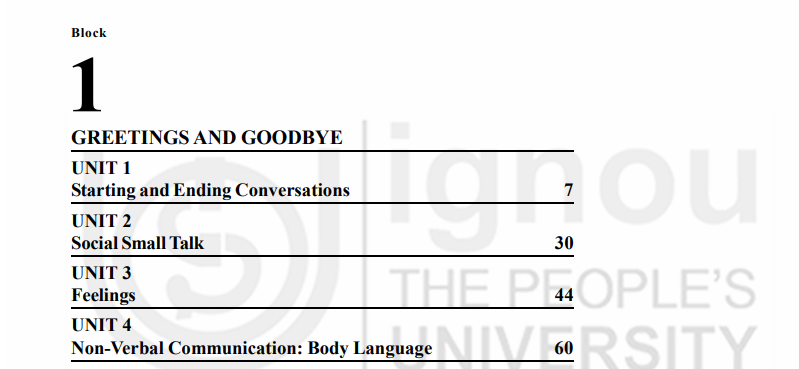

In this unit, you have to emphasize two types of questions:
- Reading comprehension questions and
- Write a dialogue between two in 10- 15 turns.
READING COMPREHENSION
First, let us look at the reading comprehension passage and try to learn how to solve it. Reading comprehension question is one of the regular questions in all previous exams.
Now take your text number one, Unit 1.

Before we come to the passage let us have a look at how to solve reading comprehension questions.
- Read questions first, then passage- Go through the questions before you read the passage. It helps to locate some answers even in the first reading attempt.
- . Do not give emphasis on the word’s meaning. Instead, emphasis on the meaning of sentences. Sometimes you have to assume the meaning of a word based on the context.
- Do not memorize any point while reading a passage. Once you located your answer, emphasize the part and form your answer.
- . Never lose your patience- Most of the passages may not be understandable at first glance. In every reading comprehension question, there will be two or three questions that can be answered easily. Therefore, be patient to read twice or twice.
- Give importance to the first and last sentences of each paragraph. Because the first and the last sentences give some hinds about answers.
- Search for signal words- Searching for the words from the question paper also can be seen as one way to reach an answer.

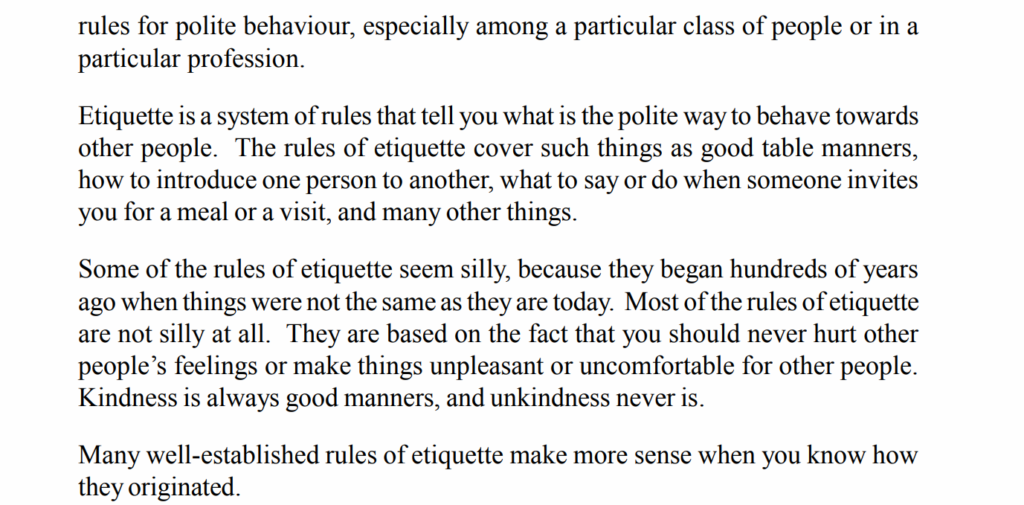
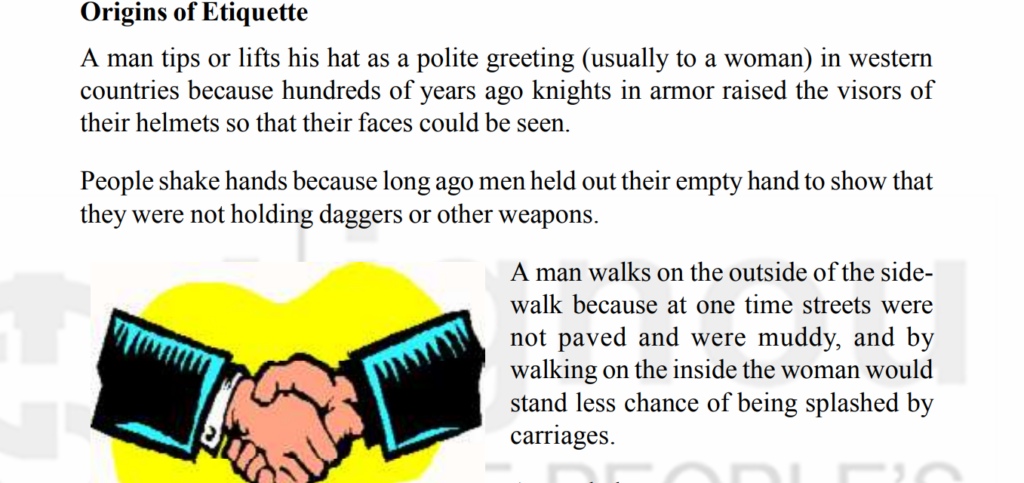
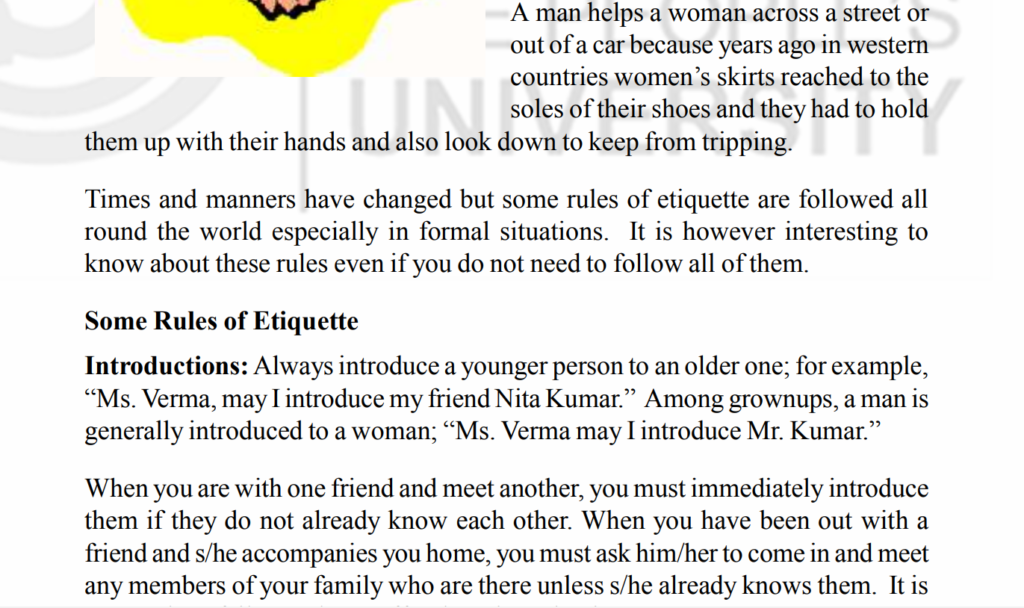
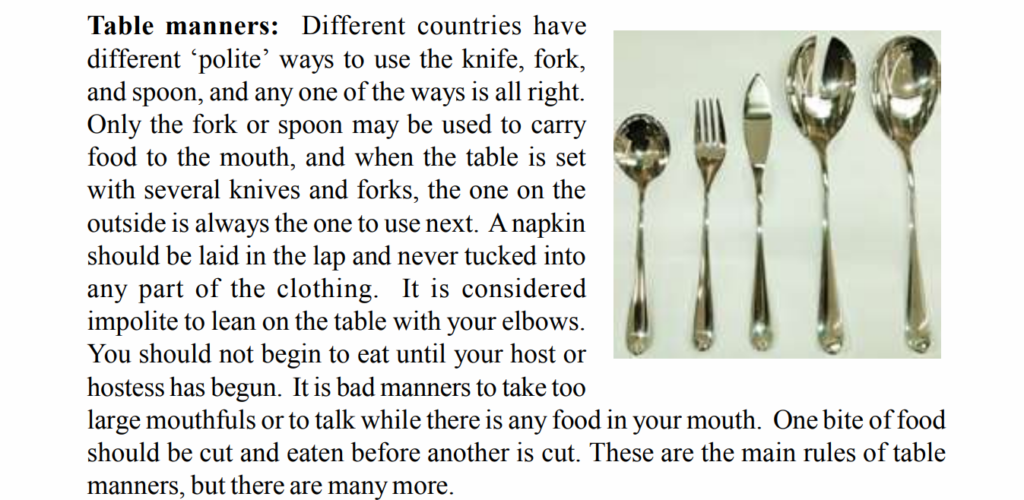
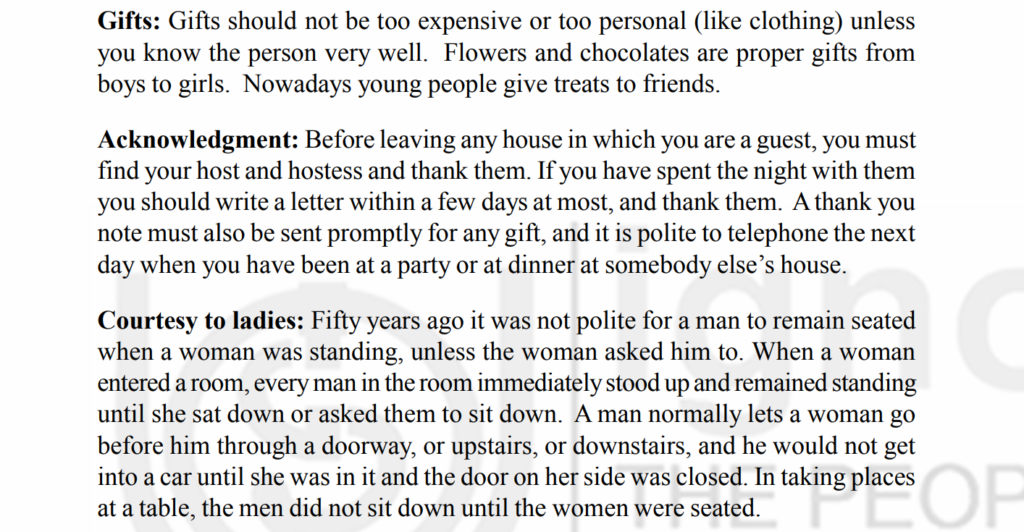

Check Your Progress 1
1) Say whether the following statements are True or False. Re-read the passage to correct the false statements:
i) Rules of etiquette are all silly.– False
ii) A younger person should be introduced to an older person- True
iii) It is rude to send a friend away from the door without introducing him/her to your family.- True
iv) It is polite to rest your elbows on the table and eat rapidly in big mouthfuls.- False
v) Expensive clothing can be given to new friends.- False
2) Fill in the blanks choosing appropriate words from the text:-
Etiquette tells us how to behave in society. If we follow good manners, we will not hurt people’s (i) ….. feelings….. and our interaction will be pleasant and (ii) …..comfortable….. Some rules of etiquette become meaningful if we study their (iii)…..origin….. For example, shaking hands began when men had to show they were not carrying (iv) …..weapons…..Some rules of etiquette are not strictly followed, especially those that deal with (v)……courtesy.… to ladies. However, one like (vi)_…..thanking…..your host and hostess before leaving a party is always followed
3) Answer the following briefly
i) How should introductions be carried out? What expression will you use?
Answer: When we introduce a person to another person you can use the expressions like, May I introduce my friend to you? Mr. Ragesh allow me to present my son to you ( This is the more formal way to introduce some to others.
ii) List three good table manners.
Answer: 1. Following are the three good table manners we have to follow while having food. Use a fork or spoon to carry food to the mouth. 2. Lay the napkin on the lap. 3. One bite should be cut and eaten before another is cut.
iii) What gifts are acceptable among newly made friends?
Answer: Flowers and chocolates are acceptable gifts among newly made friends.
iv) What should you do before leaving a party or friend’s house?
Answer: Before leaving the friend’s house and party, we have to find the host and hostess and thank them. This is a good practice that we have to follow in our life.
v) How did the custom of shaking hands starts?
Answer: The custom of shaking hands started long years ago. Long ago men held out their empty hands to show that they were not holding daggers or other weapons.
DIALOGUES OR CONVERSATIONS
A conversation can be divided into three parts- 1. Starting or beginning, middle, and ending or closing.
STARTING A CONVERSATION
Starting of conversation involves three steps: Greeting, Introducing yourself, and asking about other persons well being.
Greeting
| Good Morning/ Good Afternoon | Formal |
| Hello | Strangers |
| Hi | Informal |
| How do you do? | Just a greeting |
introduction
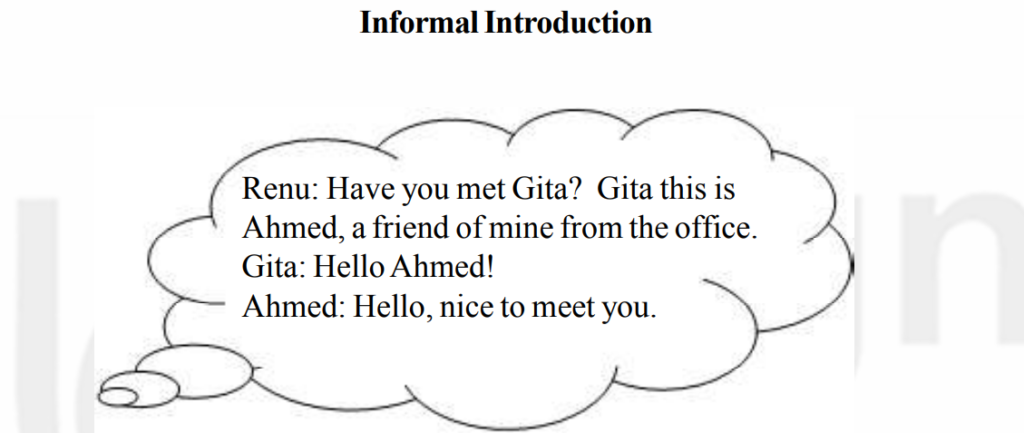
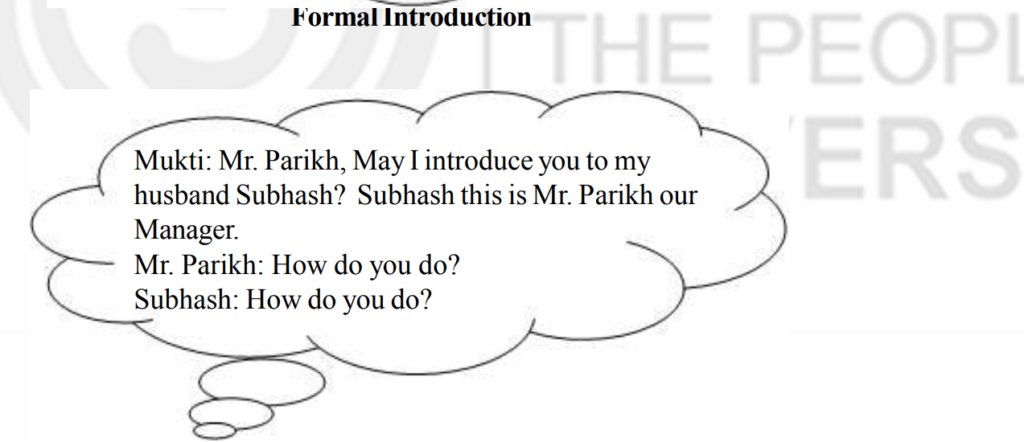
Introducing oneself

